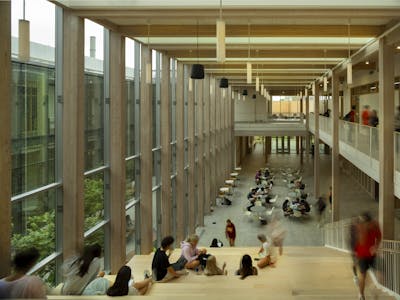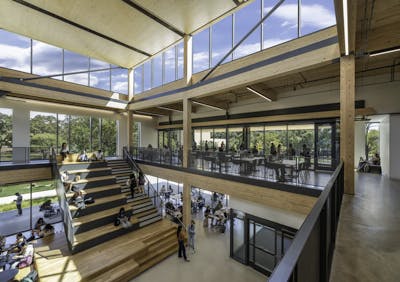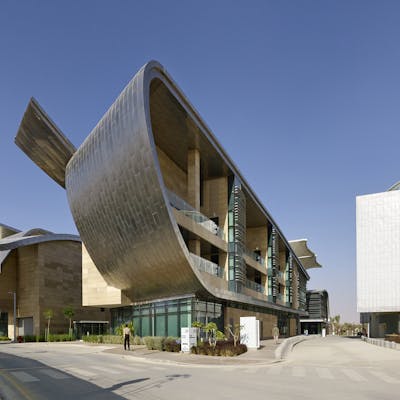
Florida International University Academic Health Center 5
Blending science and design
Project Facts
| Location | Miami, Florida |
| Owner | Florida International University |
| Size | 120,000 SF |
| Cost | $32 million |
| Status | Competed 2014 |
Overview
The Academic Health Center 5 is an integral component of Florida International University’s master plan, bridging the existing campus with new developments in harmony like the colleges themselves. This essential structure, housing the atmospheric lab and media center, is designed to remain operational even during severe storms. The architectural concept is inspired by the natural disasters it investigates and studies within its walls.
Services
About the Project
Located on the Modesto Maidique Campus, the Academic Health Center 5 (AHC5) houses the Robert Stempel College of Public Health and Social Work, the International Hurricane Research Center, the Extreme Events Institute, behavioral health labs, and the Department of Earth and Environment from the College of Arts and Sciences. The building contains research space, including food science and behavioral labs, classrooms, conference rooms, and faculty offices.
This joint facility provides opportunities for studies of extreme events, such as the impact of hurricanes and other disasters on public health. The three-building complex contains teaching labs for public health, staff offices, and wet and dry research labs for all programs in a collaborative setting.
The architectural design was developed from studying natural events such as hurricanes, earthquakes, and tsunamis. The complex centers around a courtyard shaped like a windsail, which provides daylighting on all interior spaces and enhances building and pedestrian cross-circulation. The floor footprints extend progressively outward along the south facade, providing natural shading for all but the top floor. The east exposure continues the alternating glass and precast concrete rhythm, transforming into large shading fins.




